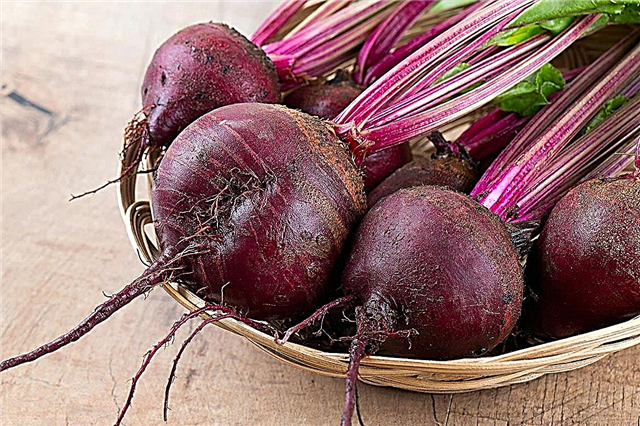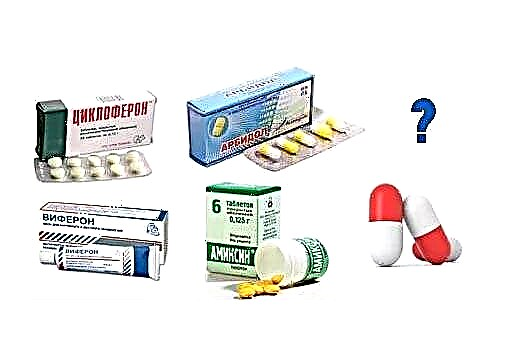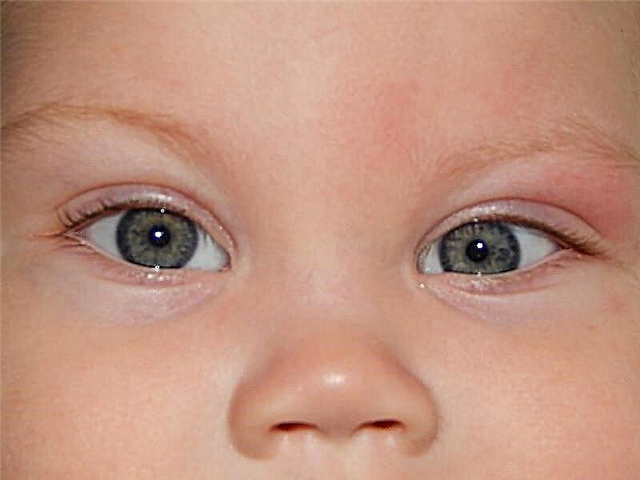
High temperature accompanies many different diseases in children. And in each case, the fever in the child brings the parents into "full combat readiness." Since doctors say that fever is extremely dangerous for young children, mothers and fathers have a reasonable question how to bring down a high temperature, preferably without the use of medications. As you know, from tablets and mixtures, in addition to benefits, there is also tangible harm, especially for the child's body. Folk recipes can always come to the rescue - safe and reliable.

Why does the temperature rise?
Everyone knows that fever is not an independent disease. This is a symptom, a protective reaction of the body to the invasion of some foreign agent, to the inflammatory process. Fever is a clear evidence of the invisible work of the immune system, which fights the pathogens of some kind of disease.

The heat, oddly enough, has good intentions - in conditions of high temperature it is more difficult for microbes to multiply, the replication of viruses slows down. If the thermometer has exceeded the 40.0 mark, microorganisms generally lose their ability to reproduce.
But with heat and fever, phagocytes - protective cells - begin to multiply more actively. They feed on harmful invaders, both viruses and bacteria, devour and digest them. The higher the temperature, the more actively phagocytes "hunt".
At an elevated temperature in the body of a sick child, several more very important processes start - the production of interferon is activated, which is involved in the immune response to the invasion, and antibodies are stimulated that are able to resist the causative agent of a particular infection.

All this is accessible and logically explains why in most cases the child's temperature should not be brought down at all.
There are only two cases when the positive properties of fever should be neglected: if the child is infants and has a fever above 38.5 °, and if a child from one to three years old has been suffering from a fever with a temperature above 39 ° for about three days.

37 °, 37.5 °, 38 ° and a little higher is not a reason to immediately stuff the baby with antipyretic drugs. It is necessary to give the immune system a chance to develop a reliable defense, and the pills that bring down the heat, "forbid" it to defend itself properly.
And now we propose to watch the release of Dr. Komarovsky on emergency care at a high temperature.
The reasons why the temperature rises are manifold. In the smallest, this can occur during teething. Almost all viral infections are accompanied by high fever. Fever accompanies meningitis, influenza, SARS, sore throat, tonsillitis, sinusitis, kidney and gastrointestinal tract diseases.

What is the danger?
The heat also has negative sides. For example, a high temperature (above 38.5) significantly increases the load on the heart, which can be dangerous for children with congenital heart defects and newborns. Fever has a negative effect on the state of the nervous system and the brain. Excessively high heat (about 40.0) can cause irreversible changes in the structure of the brain, cause disturbances in other organs, primarily in the kidneys, liver and pancreas.

When is it impossible to do with folk methods?
You cannot rely on traditional medicine if the high temperature has risen and lasts for several hours in newborns and children up to a year. The crumbs that have just been born have an imperfect thermoregulation system, at temperatures they rapidly lose heat and moisture, dehydration may occur, convulsive syndrome, respiratory failure may begin.
You shouldn't waste precious minutes and try alternative medicine recipes on your kid. He definitely needs a good antipyretic drug. "Paracetamol" and preparations containing paracetamol as the main active ingredient are suitable for such small patients.
In the next video, Dr. Komarovsky's advice is not about children's temperature.
Folk ways to reduce fever should not be tested on babies whose temperature has stably kept above 39.5 for more than three days. In this situation, medications are also required, both "paracetamol" and "Ibuprofen" are suitable.


Folk remedies cannot replace qualified emergency medical care with the use of antipyretic drugs, both in tablets and in injections. They are necessary if the child has a high temperature accompanied by vomiting, diarrhea, the baby complains of abdominal pain. Such conditions require an urgent response, since vomiting and diarrhea contribute to a very rapid loss of fluid, which for a small child is fraught with death in case of untimely drug assistance.

You should not start home treatment with improvised means if the child has a history of serious diseases of internal organs (congenital or acquired). In this situation, any temperature jump up to 38.0 and above should be a signal for reasonable parents that it is time to call a doctor or an ambulance.

If the fever is accompanied by convulsions, loss of consciousness, pallor and severe lethargy, this is also a reason to urgently seek medical help, and not give the baby tea with honey and raspberries.

Folk remedies
Ordinary water
Children can be swabbed with water at room temperature. This gives a slight and short-term effect, usually within half an hour, the fever returns again. But rubbing with water is harmless, so they can be repeated with enviable persistence and frequency.
Small children are allowed to do enemas with warm water. For babies up to six months, no more than 60 ml of liquid is injected into the rectum, for children from 6 months to a year, no more than 160 ml. This procedure has one very important drawback - any enema is not very useful for the intestinal microflora, and therefore it is worth thinking carefully several times before lowering the baby's temperature in this way.
Vinegar
It can also be used for wiping. Concentrated acetic acid (70%) is not suitable for these purposes, a weak solution is needed - a maximum of 9%. It must be diluted in equal parts with water at room temperature. The resulting acidic liquid is used to wipe the body of the child, stripped to panties, avoiding the face and genitals. Then they let the body dry and cover the child with a thin blanket. You cannot wrap your baby up. As in the case of ordinary water, the effect of such a procedure lasts no more than 30-40 minutes, then the rubdown must be repeated.
If you make small gauze lotions with such a vinegar solution on the temples, forehead, calves, and the inner part of the elbow and hold it until it dries, the effect will be less pronounced, but slightly more long-lasting.
Many doctors oppose vinegar and alcohol rubbing on children and recommend using water for rubbing.


Rubbing with vinegar and lotions with an acidic solution is not recommended for small children, but there is a way out - socks are moistened in a solution and put on the baby's legs. Socks should be removed after 20 minutes. Repeat the procedure as the heat rises again.

Vodka
A very popular way to lower the temperature involves not pure vodka, but its 50% solution with water. The child is rubbed with this composition, and then fanned with a towel for 30-40 minutes. This method, although laborious, is very effective and in some cases one or two procedures are enough for the fever to decrease and no longer rise. But many doctors speak out against this method of lowering the temperature.

Now let's hear from Dr. Komarovsky about rubbing with vinegar and alcohol.
Sauerkraut
Compresses with this tool are applied to the vein area on the inside of the elbow bend. There is delicate and thin skin, so it is important to observe that the brine does not cause any aggressive irritating reaction. This method is considered by many parents to be quite effective.

Cranberry
A stock of these marsh berries should be in the freezer of every family with children. Cranberry juice in high heat is an excellent diaphoretic. It allows you to lower the temperature within half an hour after drinking. The effect lasts for several hours.

Linden
Herbal tea, which can be brewed from the flowers of this tree, promotes increased sweating, which means a rather rapid decrease in the thermometer. The herbal collection is sold in any pharmacy, you need to brew it by taking a teaspoon of raw materials and pouring a glass of boiling water. Such a healing tea is insisted for about half an hour, after which you can add a spoonful of honey to it. This method is not suitable for small children, because linden and honey are quite strong allergens.
And if even in a healthy state the toddler tolerates both of these products well, then during the period when his immunity does an important job of fighting pathogenic microbes and viruses, an allergy to such a drink may well appear.


Needles
A liter jar of pine needles must be turned into a gruel using an ordinary meat grinder, mixed with honey (no more than two tablespoons). To mix everything. From the resulting mass, you need to mold small cakes. One of them is placed on a piece of cloth and applied to the baby's chest, the second to the back. Keep it for about 15 minutes, after which the temperature should begin to decrease within half an hour.

Ginger
Ginger is peeled and grated. The resulting tart mass must be dosed carefully. For half a glass of warm tea, you need to put no more than half a teaspoon of ginger mixture, stir and give the child a drink. The heat will subside almost immediately. In addition, ginger has a tonic effect. Ginger tea is not suitable for children under 6-7 years old, it can irritate the digestive system.

The danger of self-medication
The onset of the negative effects of fever in children, especially in small children, is several times higher than in adults. Convulsions and loss of consciousness, respiratory failure and the development of acute heart failure cannot be predicted in any way, these conditions have practically no precursors.
The danger of self-treatment of children's fever lies in the fact that parents who decide not to call a doctor take responsibility for the life of the baby. Lost time in cases of high fever plays a key role.
Let's listen in the next video, what is the danger of self-treatment of childhood diseases.
It can be very difficult to understand the reason for the rise in temperature on your own. The higher the fever, the more careful and urgent examination the child needs.

What can’t be done?
- First of all, a baby with a fever should be stripped down to panties or a diaper. You can only cover your child with a sheet, not three blankets and a downy shawl. It is strictly forbidden to wrap up a child with a high temperature!
- When rubbing with diluted vodka or vinegar solution, it is important not to rub the products into the skin, but only lightly touch them. Intense hand movements with strong pressure on the surface of the child's body are prohibited, as they cause increased blood circulation and an additional rise in temperature.
- In high heat, you can not use folk remedies in the form of inhalation.
- Massage, warming up, warming compresses at high temperatures are strictly prohibited!
- Do not force feed a child with a fever. Lack of appetite in this situation is a wise decision of nature itself, since an empty stomach and clean intestines help to transfer the disease faster and facilitate its course.
- Do not give your child cold drinks. Such drinking can cause vascular spasm.
- Some parents advise placing a fan at the side of the child's bed and blowing it around until the temperature begins to drop. Such "treatment" is a sure way to pneumonia, experts say. It is better to refrain from blowing.
- Do not bathe a child with a fever in a hot bath or hot shower. This will only contribute to overheating.

Tips
- A sick child needs to measure the temperature at least twice a day - in the morning and in the evening, if the fever has risen, and the cause cannot be established in any way, there are no other symptoms, measurements should be taken every two hours.
- There is no need to strive for a rapid decrease in body temperature in a child. The fever should subside gradually. A sharp jump down can greatly harm the health of the baby. A decrease of 0.5 degrees in one procedure is considered optimal. It is not necessary to reduce it by more than 1 degree per day.
- A decrease in temperature should always be accompanied by an increase in fluid in the child's diet. An abundant drinking regime is the main requirement of both medical and non-traditional treatment of fever. It is advisable for the child to drink compotes, fruit drinks from berries and fruits with a high content of vitamin C (black currants, raspberries, viburnum, cranberries, rosehip broth), but milk, fermented milk products are better left for later.
- In a room with a sick child with a high temperature, do not close all windows and doors. On the contrary, the room should be well ventilated, it should not be hot. If the fever occurs during the cold season, you need to hang wet towels on the hot radiators in the apartment and make sure that they remain damp. This will help increase the humidity of the air in the house, which, in turn, will protect the delicate mucous membranes of the nose, nasopharynx and larynx, as well as the bronchi and trachea of the child from drying out and inflammation. The optimum air temperature in the room is 18-19 degrees, humidity is 50-70%.
- Folk remedies will be most effective if they are correctly combined with traditional therapy. They perfectly complement the effect of certain medications, enhance the effect of pharmaceutical preparations, and accelerate the child's recovery. If there is an irresistible desire and need to treat your child using folk methods, be sure to consult your doctor. Pediatricians are quite willing to approve of many of the above treatments for fever. Unless, of course, the child has serious concomitant diseases.




